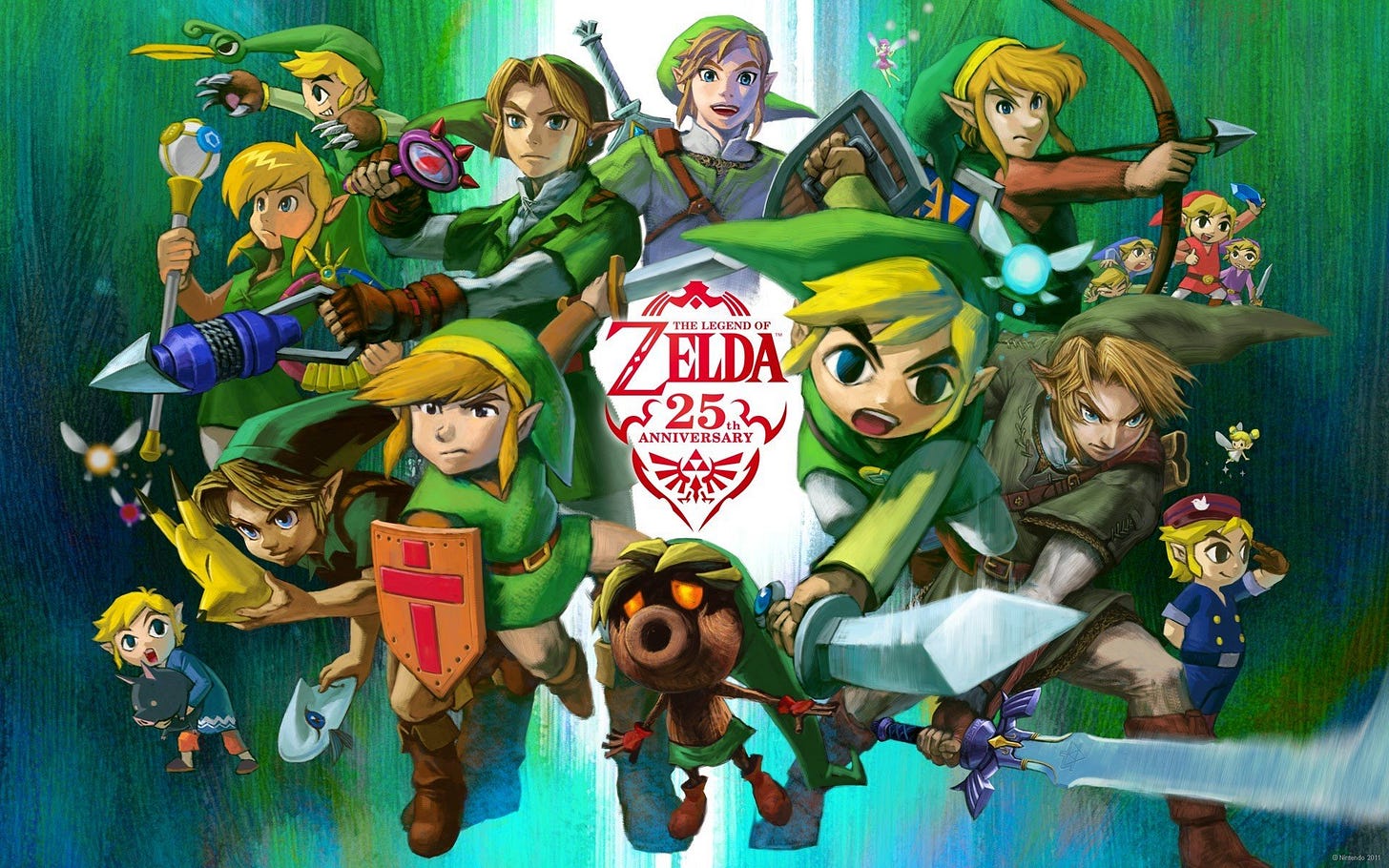Japan: A Soft Power Giant?
"Japan is a bit like sugar or salt: unless one tastes it, one may never be able to understand it. In the past, we have not publicized Japan culturally. We have done quite well in exporting products. But from now on, we must do more to export cultural information."
Yasuhiro Nakasone, the charismatic Prime Minister of Japan during the 1980s, said that back in 1983. Unfortunately, nothing much happened for three decades. Japan’s main exports continued to be cars, semi-conductor equipment and machinery.
Japanese culture was always celebrated, especially in South East Asia, notably in places like Taiwan, but it remained niche in the West. That all started to change when the former and now deceased Japanese Prime Minister, Shinzo Abe, came back for a second term in 2013.
Over the last 10-15 years, Japan’s cultural exports have experienced a massive boom. Anime, manga, and video games have led the charge. But Japanese influence can also be observed in music, cinema and even convenience stores. Japan’s famous onigiri (rice ball) used to be hangover food. Now, it’s a sought-after delicacy for the foreign visitor to Japan.
The economic opportunity has not been overlooked. Sony has ramped up the marketing it does for its anime platform, Crunchyroll, in China and India. CVC Capital Partners, a global private equity firm, bought Japanese streetwear fashion maker, A Bathing Ape (BAPE), and Blackstone this year bought a 55.1% stake in Infocom Corp, a Japanese e-comics and manga provider with very steamy storylines.
The author believes we are still in the early stages of this phenomenon. Japan’s cultural products will experience a boom period for another 20 years, at least. Just as Japan was an undiscovered tourist destination only 10 years ago, its creative products and cultural uniqueness are still being discovered by people around the world. And importantly, Japanese companies are getting better at monetizing the opportunity.
But what stocks do you buy to play the theme? The author understands that there are stocks related to food/cuisine (Saizeriya), beauty (Fancl) and fashion (Fast Retail) that can be traded on the TSE and are doing well in overseas markets, but he will focus his attention on the product that everyone needs in the digital age: content IP.
Given Japan’s rich and unique cultural heritage, it should come as no surprise that its corporates have built up a war chest of original IP. The content libraries of Sony and Nintendo can compete with any Hollywood film studio or any streaming service like Netflix.
This note will try to do the following:
Summarize available Japanese stocks in the anime, manga, video game and movie industries.
Do a deep dive into the relatively new, and fast-growing, V-Tubing industry, which has its origins in Japan but is now a global business.
Suggest that one Japanese V-Tubing stock might be a multi-bagger.
Let’s get into it.
Why Japanese content?
Things were a bit desperate in Japan in 2010. The country was on life support. And the equity market languished. It was in that year, the Japanese government decided to launch the Cool Japan concept, an attempt to copy Tony Blair’s successful Cool Britain campaign from over a decade earlier. It didn’t work.
Japanese culture was as “cool” as it is today, but there was a lack of infrastructure for global expansion. Japanese culture remained a niche overseas. Today is different. Japanese trading companies like Marubeni have expanded distribution channels for cultural exports and digitalization have lowered the hurdles for expansion.
It comes at an important time. The demand for content is insatiable. The proliferation of mobile phones in developing countries like India has significantly increased the demand for content. India, for example, is one of the biggest consumers of anime content in the world. Who’d have thought?
What’s interesting is content libraries have become more valuable because of the rise of AI. By leveraging AI, companies can enhance their content delivery, create more engaging experiences, and optimize their monetization strategies. The trick is to own the content. Thankfully, many Japanese companies always have.
Anime and Manga
The author paid practically zero attention to both anime and manga in all the time he lived in Japan and so he doesn’t expect the reader to readily understand the difference. For the record, anime refers to animated TV shows while manga refers to comic books or graphic novels. There are many other differences between the two genres, but they are too nuanced for this discussion.
The manga publishing industry tends to be dominated by private companies. These include:
Kodansha: One of the largest and most well-known manga publishers in Japan, known for titles like "Attack on Titan" and "Sailor Moon."
Shueisha: Part of the Hitotsubashi Group, Shueisha publishes popular series such as "One Piece" and "Dragon Ball."
Shogakukan: Another major publisher, known for titles like "Detective Conan" and "Pokémon."
Hakusensha: A subsidiary of Shogakukan, Hakusensha publishes titles like "Berserk" and "Fruits Basket."
Arguably, the best listed play is 9364 JP Square Enix Holdings. Square Enix's Gangan Comics division is well-known and contributes significantly to its revenue. Some of their popular series include Fullmetal Alchemist, Soul Eater (yes, there are some very morbid themes!), and Black Butler (not as racist as you think).
Of course, there are others. 7832 JP Bandai Namco Holdings is involved in the production of the popular series, “One Piece” and “Naruto,” which is one of the bestselling manga of all time. And 3652 JP CyberAgent manages several popular manga series.
For anime, there are arguably a larger selection of names with exposure. The bigger names include 6758 Sony. Sony acquired Crunchyroll on August 9, 2021, as part of its strategy to expand its presence in the anime industry. Crunchyroll has been a huge success, generating over USD$1 billion in revenue in 2023. It has become popular in countries like India and Brazil, partly because access to mobile has created a lot of customers, hungry for content, especially amongst the 15-30 age bracket.
Other names include 7974 Nintendo (“Pokemon” and “The Legend of Zelda”) and interestingly 700 HK Tencent. In 2021, Tencent bought 6.86% of Kadokawa for approximately USD$264 million. Kadokawa is a major player in the anime and manga industry.
Video Games
The dominance of the Japanese video game industry needs no explanation. Japanese companies like Nintendo and Sega were pioneers in gaming, releasing popular games in the 1970s.
Japanese companies have gone on to produce iconic franchises such as Super Mario, Pokemon, The Legend of Zelda and Final Fantasy. China might have an awesome manufacturing ecosystem, which Tim Cook thinks is second to none, but when it comes to gaming, Japan has a world class ecosystem of game developers, publishers, and hardware manufacturers, fostering collaboration and innovation.
Video game related stocks include:
7974 JP Nintendo Co., Ltd: Known for its popular franchises like "Mario" and "Zelda," Nintendo continues to be a strong player in the gaming industry. (PER: 30x; PBR 3.4x; Yield 1.7%)
6758 JP Sony Group Corporation: With its PlayStation consoles and a strong lineup of exclusive games, Sony remains a top choice for gaming investors.
PER: 16.8x; PBR: 2.1x; Yield 0.67%)
7832 JP Bandai Namco Holdings Inc: This company is involved in the production and distribution of popular anime and video games, including series like "One Piece" and "Naruto." (19x; PBR: 2.97x; Yield: 0.68%)
9766 JP Konami Holdings Corporation: Known for franchises like "Metal Gear Solid" and "Pro Evolution Soccer," Konami is a significant player in the gaming market. (31x; PBR: 4.10x; Yield: 0.97%)
9697 JP Capcom Co., Ltd: Famous for games like "Resident Evil" and "Street Fighter," Capcom continues to thrive in the gaming market. (PER 27.8x; PBR: 6.4x; Yield: 1.18%)
6460 JP Sega Sammy Holdings Inc: Sega is known for classic franchises like "Sonic the Hedgehog" and continues to produce popular games and arcade experiences. (15.7x; PBR: 1.57x; Yield: 1.73%).
Film Production
In recent years, there has been a noticeable increase in the international success of Japanese films. Movies like "Shin Godzilla", "Your Name", and "Weathering with You" have received critical acclaim and have been well-received by audiences around the world.
There are some listed names to explore:
9602 JP Toho Co., Ltd: One of Japan's oldest and most famous film production companies, known for producing iconic films like the Godzilla series. (PER: 25x; PBR: 2.2x; Yield: 1.18%)
Shochiku Co., Ltd. (9601.T): Another major film production company, known for its classic films and contemporary works. (PER: N/A; PBR: 1.65x; Yield: 0.27%)
Toei Animation Co., Ltd. (4816.T): A leading animation studio responsible for popular series like Dragon Ball and One Piece. (PER: 36x; PBR: 5x; Yield: 0.9%)
Kadokawa Corporation (9468.T): A major publisher and film production company, known for its involvement in anime and live-action films. (PER: 46x; PBR: 2.35x; Yield: 0.9%)
Toei Co., Ltd. (9605.T): Another prominent film and television production company, part of the "Big Four" film companies in Japan. (PER: 28x; PBR: 1.29x; Yield: 0.24%)
For the author, all these names are interesting. But they are all a bit expensive for his liking. Yes, some should do well, but they might not have explosive growth. Yes, some might even be a target of a foreign acquirer, but you might have to wait a long time for that to happen. And what premium will really be paid? Instead, he feels it might be worth looking at another area all together and that’s V-Tubing!
What are VTubers?
When you find out what V-Tubing is all about, it will come as no surprise that its origin story is in Japan. Japanese culture is rich and varied but there are some really funky aspects to it too. And for the average person, V-Tubing is, well, a bit bizarre.
It finds itself at a unique intersection of three trends. First, there are huge shifts taking place in media and technology. Think AI, the metaverse, motion tracking and face detection software. Second, the creator economy has arrived and isn’t going away. Instead, it’s compounding. And third, we are starting to see young people ask questions about identity and self in the digital age. Why is life so complicated for kids these days?
A V-Tuber (short for Virtual YouTuber) is an online entertainer who uses a virtual avatar generated using computer graphics. These avatars are animated using real-time motion capture software, which captures the streamer's movements, expressions, and mouth movements. CodeMiko does an admirable job explaining how it works behind the scenes:
V-Tubers typically create content on platforms like YouTube, Twitch, and Niconico, and their avatars can range from being human-like characters to demon-like! It might sound weird but it’s very popular! And it’s big business!
Keep reading with a 7-day free trial
Subscribe to Mateen's Newsletter - Discuss The Tape to keep reading this post and get 7 days of free access to the full post archives.









